Historical Architecture of Grosse Pointe – Welcome to 15530 Windmill Pointe
Last week we explored one of Grosse Pointe’s most historic and prestigious homes 625 Lake Shore Rd. Completed in 1909, as a summer cottage for Harry Mulford Jewett, Walter MacFarlane designed the gracious white clapboard Colonial revival residence.
This week we visit one of Grosse Pointe’s largest homes – 15530 Windmill Pointe. The immense 14,547 sq ft stately Colonial Revival mansion was completed in 1929, by one of the most prominent architectural firms in the state, Smith, Hinchman and Grylls. Hal H. Smith, a leading attorney in the city and a patron of the arts, commissioned it.
15530 Windmill Pointe is situated on 1.9 acres of land on the shores of Lake St. Clair with 200’ of water frontage. The house is constructed of brick, with a slate roof. The symmetrical design of the home is typical of this architectural style, as is the two identical wings on either side of the property, along with the many evenly spaced large windows. The focal point of the exterior is the entranceway; steps lead to the front door that is flanked by two limestone columns and joined by an elaborately carved arch.
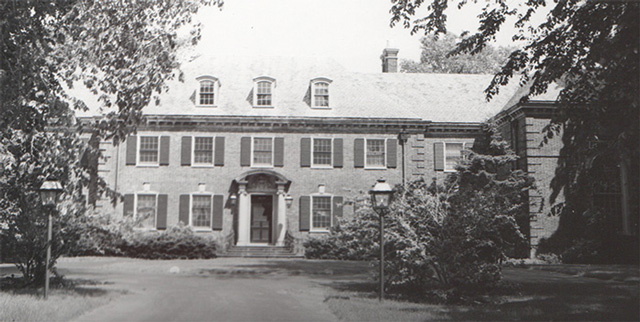
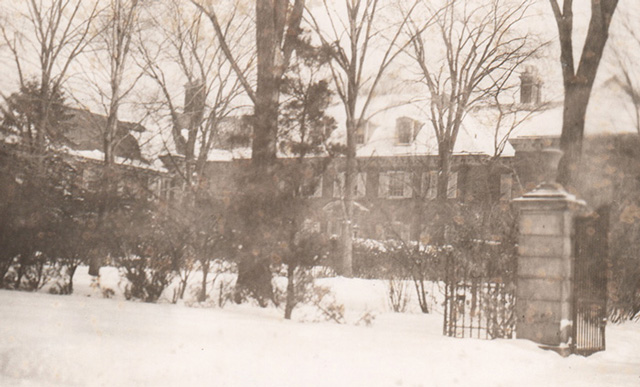
The interior is exquisite. The long, narrow great hall has a marble floor, and connects most of the major rooms on the first floor. The 14’ x 24’ sq ft sitting room leads through to the colossal 32’ x 45’ sq ft library. The two-story library features a large natural fireplace, beautiful walnut paneling, and a second floor walk around balcony. However, the focal point of the room is the stunning 21’ cathedral ceiling. It is reported the original owner Hal H. Smith loved libraries, and even wrote a book about them – “On the Gathering of a Library”, published in 1942. Based on an article from msn.com we understand the library has a steel fire door that, in the event of a fire, seals the room off from the rest of the house. The article also describes how the current owner, who has owned the property for 42 years, commissioned Andrzej Sikora (a Polish artist who settled in Detroit in 1990), to paint three ceiling murals in the house. Arguably the most dramatic is the mural in the library that is said to be a study of the seven deadly sins; the painting is populated with cherubim trailing pink ribbons across a pale blue sky. Source msn.com. The historic interior photos are courtesy of Detroityes.com (date unknown). All color photos are courtesy of Realtor.com.
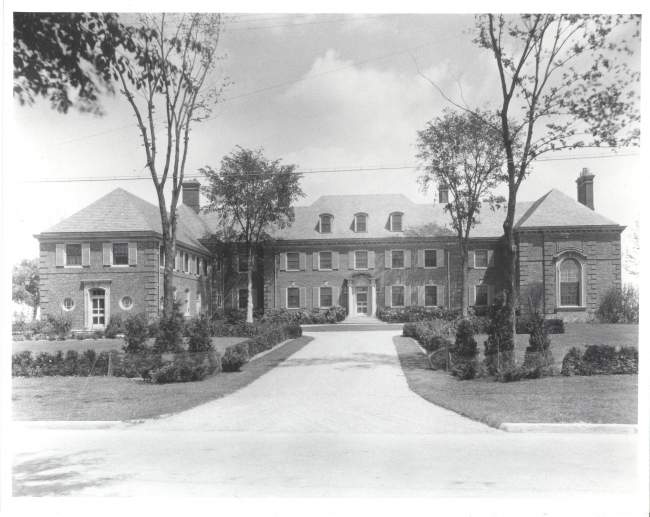
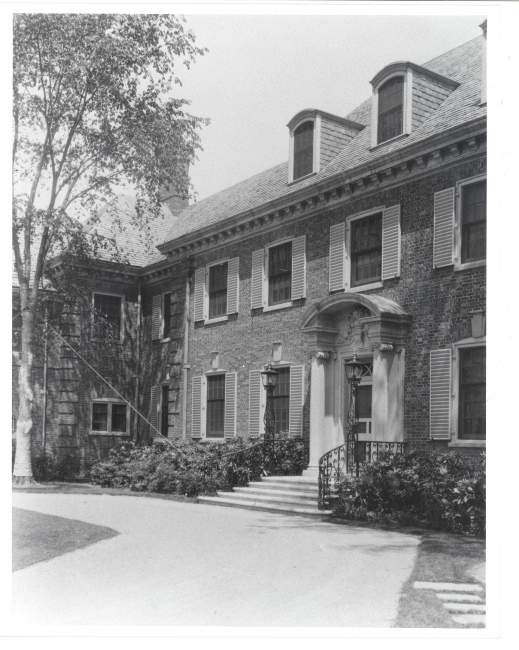
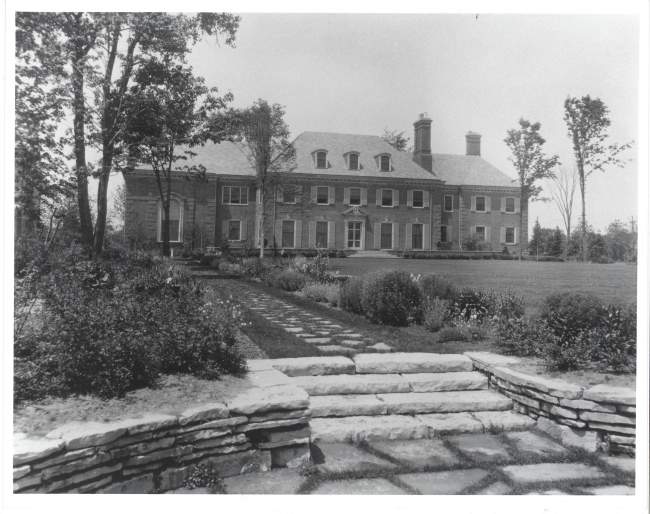

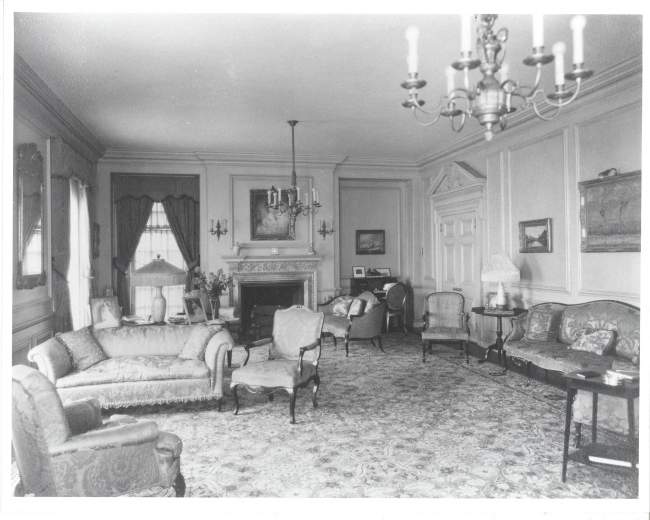
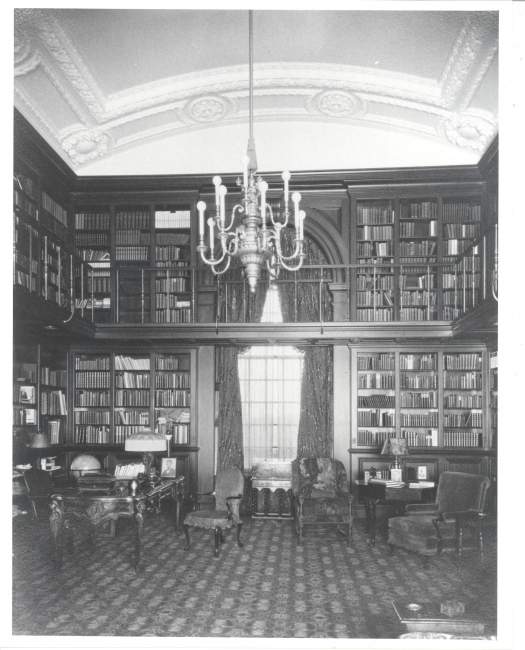
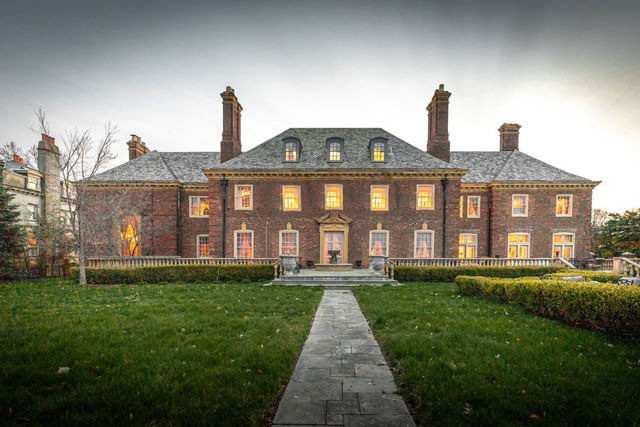
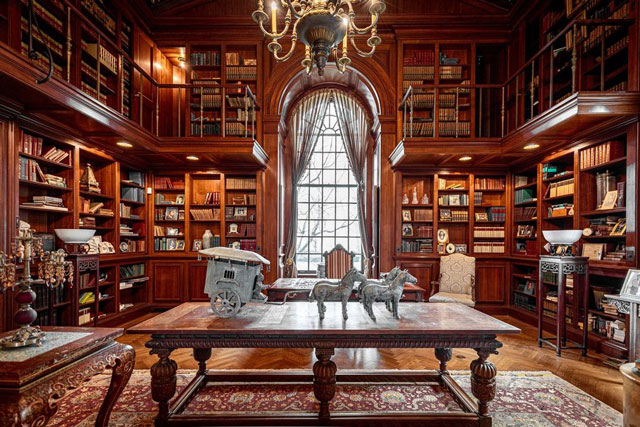

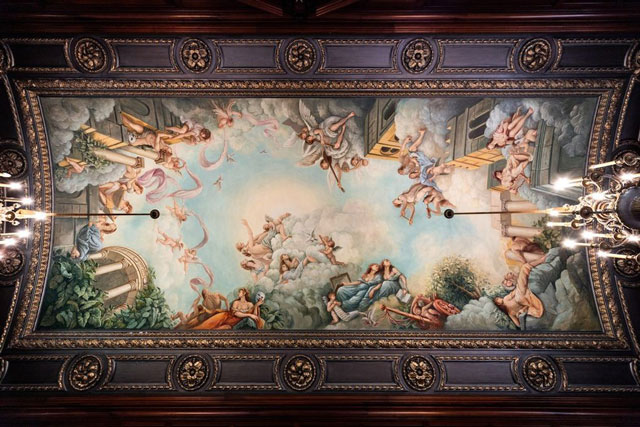
Also on the main floor is the 20’ x 22’ sq ft dining room that has a parquet floor, a beautiful chandelier, a mural on the ceiling, and a carved limestone fireplace. The living room is 20’ x 35’ sq ft and also features a large limestone fireplace.
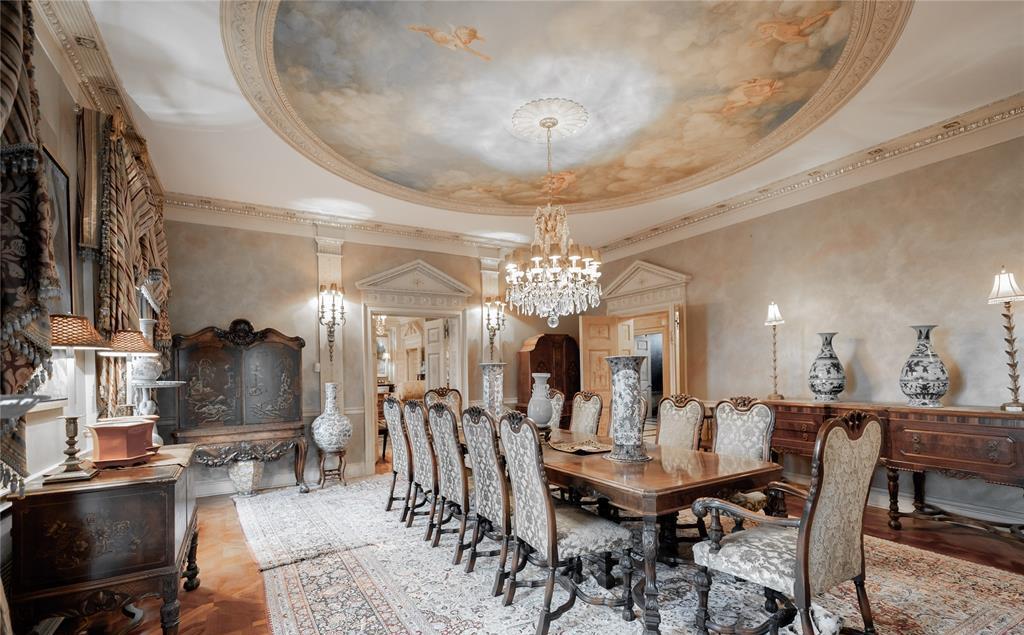
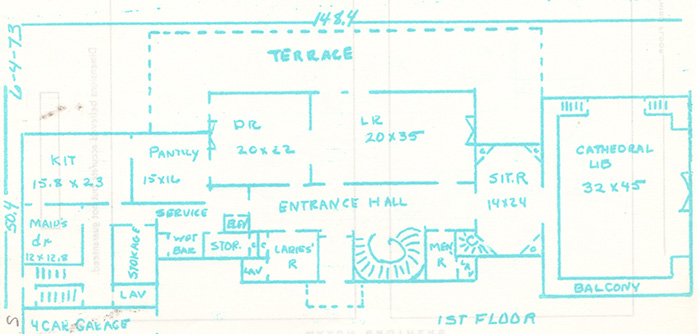
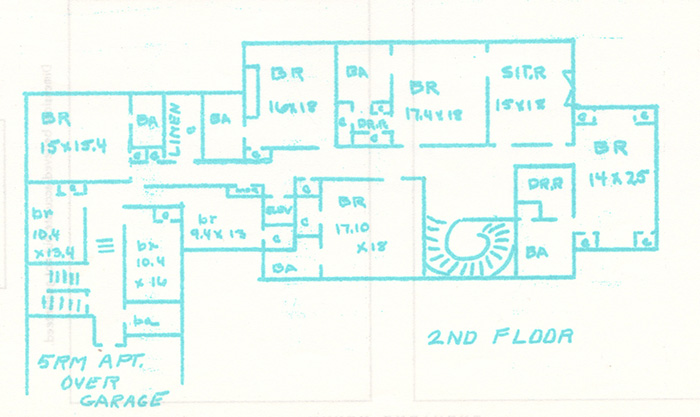
A hanging circular staircase and an elevator access the second floor. There are five large bedrooms, including the master suite (14’ x 25’ sq ft), and a sitting room (15’ x 18’ sq ft) – both rooms have carved limestone fireplaces. Also on the second floor were three additional bedrooms for the maid’s, service stairs to the first floor along with access to the 5-room apartment over the 4-car garage (it is not known if this was part of the original build or was a later addition).
The original owner of 15530 Windmill Pointe was Hal H. Smith, partner in a leading Detroit law firm. Mr. Smith was born in Ionia in 1873. He graduated from the University of Michigan in 1895, and passed the bar exam the following year. Prior to settling in Detroit he practiced law in Ionia from 1896 to 1905. In 1906, he relocated to Detroit and became partner in Beaumont, Smith and Harris in 1908. Aside from holding directorships in several other firms Mr. Smith was also a patron of the arts, and played a pivotal role in the promotion and appreciation of art in Detroit – being a member of the Detroit Museum of Art Founders Society. He was also the founder and continuous president of the Friends of the Detroit Public Library. Hal H. Smith passed suddenly in 1944, aged 71.
It is not clear how long Mrs. Smith continued to reside in the property but we understand from our files 15530 Windmill Pointe was owned by John M. Hatch during the early 1970’s. The property was listed for sale by Mr. Hatch in 1974, for $149.000 (around $783,000 today), That same year it was purchased by Ernest L. Olde Jr., a pioneer in the discount stock brokerage business and founder of Olde Discount Corporation. He had a significant interest in all forms of art and served as a patron to sculptors and painters. Mr. Olde redecorated the property and listed the house for sale in 1978, for $265,000 (around $1.1m today). It was subsequently sold and hasn’t changed hands in 42 years.
The architects of 15530 Windmill Pointe were renowned firm Smith, Hinchman & Grylls (SHG). Prior to working on the house for Hal Smith the firm had established a stellar reputation in Detroit for designing large commercial and civic projects, creating iconic buildings such as –
- Crowleys Department Store (Detroit 1906)
- Hudsons Department Store (Detroit 1911)
- The Bankers Trust Company Building (Detroit 1925)
- The Buhl Building (Detroit 1925)
- Guardian Building (Detroit 1928, designed by architect Wirt Rowland, employed by SHG)
Despite their work on these larger scale projects the firm of SHG were just as skilled with residential projects. According to research on Michiganmodern.org early on in the firm’s history, the Smith Firm (as it was known prior to 1906) was adept at ‘adjusting stylistically to the preference of the client, taking inspiration and copying from architecture books to design various Classic Revival style structures’. By 1906, the firm had taken on two new partners and was subsequently renamed Smith, Hinchman & Grylls. By the end of World War I the firm had over 270 staff, and Michiganmodern.org states ‘during the 1920’s the firm stayed true to its design roots, producing classically inspired architecture throughout Metro Detroit’. SHG designed several grand homes in Grosse Pointe – 15530 Windmill Pointe was by far their largest residential project in the community.
15530 Windmill Pointe is a beautiful example of Colonial Revival architecture. Several families who truly appreciate art have owned the property – it is in essence an ongoing and constantly evolving exhibition.
*Photos courtesy of the Higbie Maxon Agney archives unless stated.
Written by Katie Doelle
Copyright © 2020 Katie Doelle

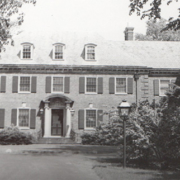

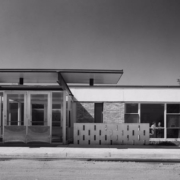
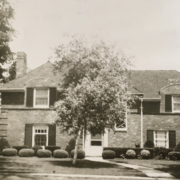
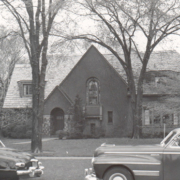
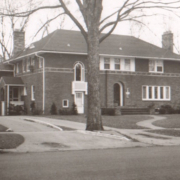
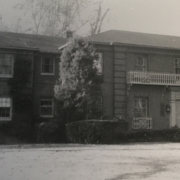
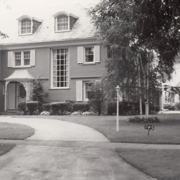
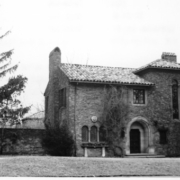
Leave a Reply
Want to join the discussion?Feel free to contribute!